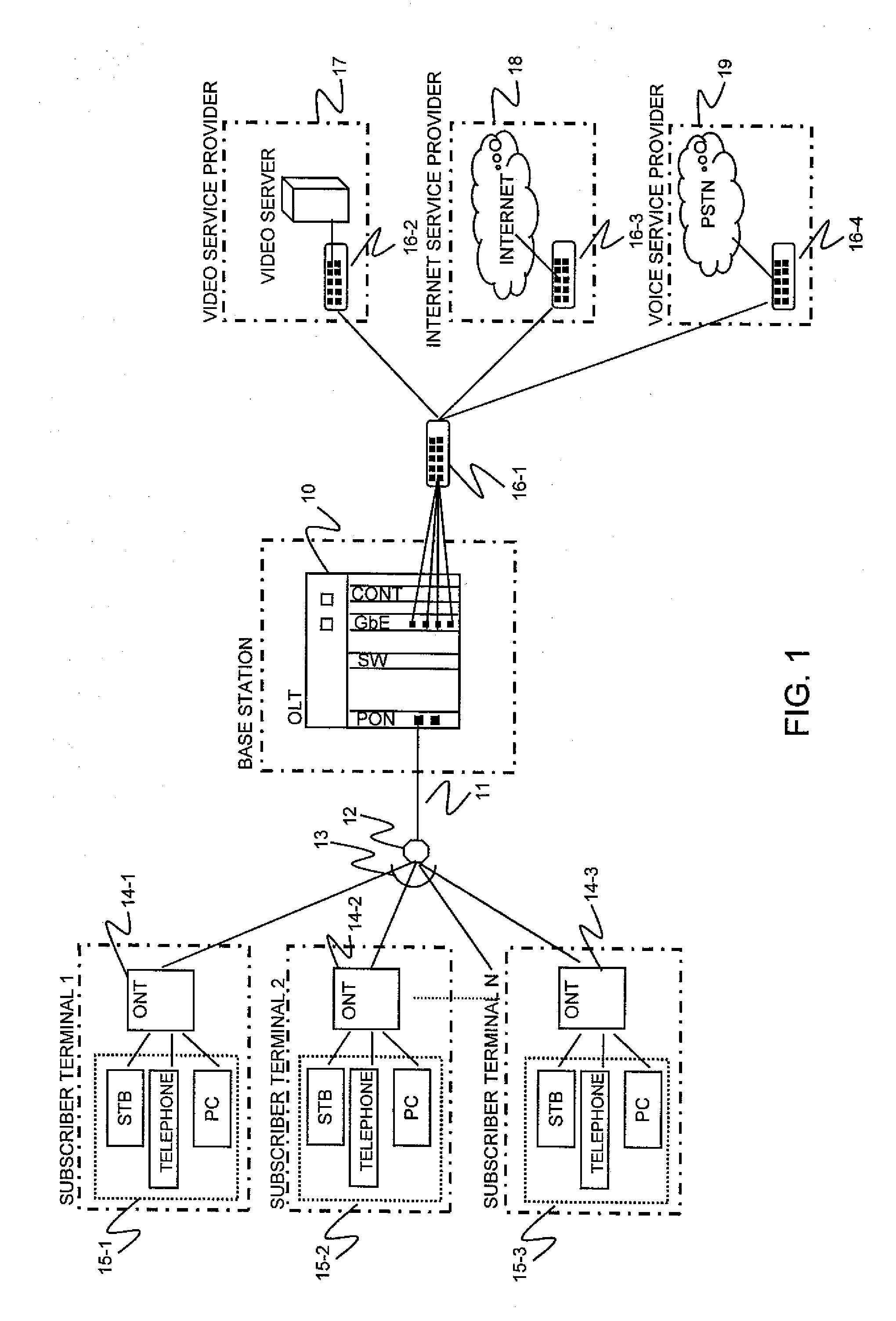Communication System, Optical Line Terminal, and Congestion Control Method
- Summary
- Abstract
- Description
- Claims
- Application Information
AI Technical Summary
Benefits of technology
Problems solved by technology
Method used
Image
Examples
first embodiment
1. First Embodiment
[0075]As shown in FIG. 1, the present invention is applied to the network where the OLT 10 is connected to the optical splitter 12 through the core optical fiber 11 and the optical splitter 12 is connected to the ONTs 14-1 to 14-3 through the plurality of local optical fibers 13. Hardware structure
[0076]FIG. 3 is a block diagram of a passive optical network (PON) system to which the present invention is applied.
[0077]The PON system includes, for example, an OLT 300, a plurality of STBs 301-1 and 301-2, a plurality of ONTs 302-1 and 302-2, a plurality of optical splitters 303-1 to 303-2, a router 310 capable of multiple multicast, and video servers 311-1 and 311-2 for distributing video data to users. The OLT 300 includes, for example, a plurality of PON cards 304-1 and 304-2, a delay buffer 305 for giving a delay to an MC group, a delayed MC group management table 306 provided inside or outside an L2SW, a plurality of L2SW cards 307-1 and 307-2 serving as IGMP pro...
second embodiment
2. Second Embodiment
[0131]FIG. 14 shows the structure of a PON system according to a second embodiment of the present invention.
[0132]The PON system of the second embodiment includes an MC group re-arrangement table 331 in addition to the structure of the PON system of the first embodiment.
Table Structure
[0133]FIG. 13 shows the format of the MC group re-arrangement table 331.
[0134]The MC group re-arrangement table 331 is generated by using the delayed MC group management table (see FIG. 6). MC groups for which a join is possible in the delayed MC group management table (see FIG. 6) are arranged in an ascending order of delay, with re-arrangement numbers 1300 attached. The other elements are the same as those in the delayed MC group management table (see FIG. 6).
Operation
[0135]FIG. 12 is a flowchart of processing in the second embodiment.
[0136]The flowchart of FIG. 12 in the second embodiment is the same as the flowchart of FIG. 10 in the first embodiment except tha...
PUM
 Login to View More
Login to View More Abstract
Description
Claims
Application Information
 Login to View More
Login to View More - R&D
- Intellectual Property
- Life Sciences
- Materials
- Tech Scout
- Unparalleled Data Quality
- Higher Quality Content
- 60% Fewer Hallucinations
Browse by: Latest US Patents, China's latest patents, Technical Efficacy Thesaurus, Application Domain, Technology Topic, Popular Technical Reports.
© 2025 PatSnap. All rights reserved.Legal|Privacy policy|Modern Slavery Act Transparency Statement|Sitemap|About US| Contact US: help@patsnap.com



